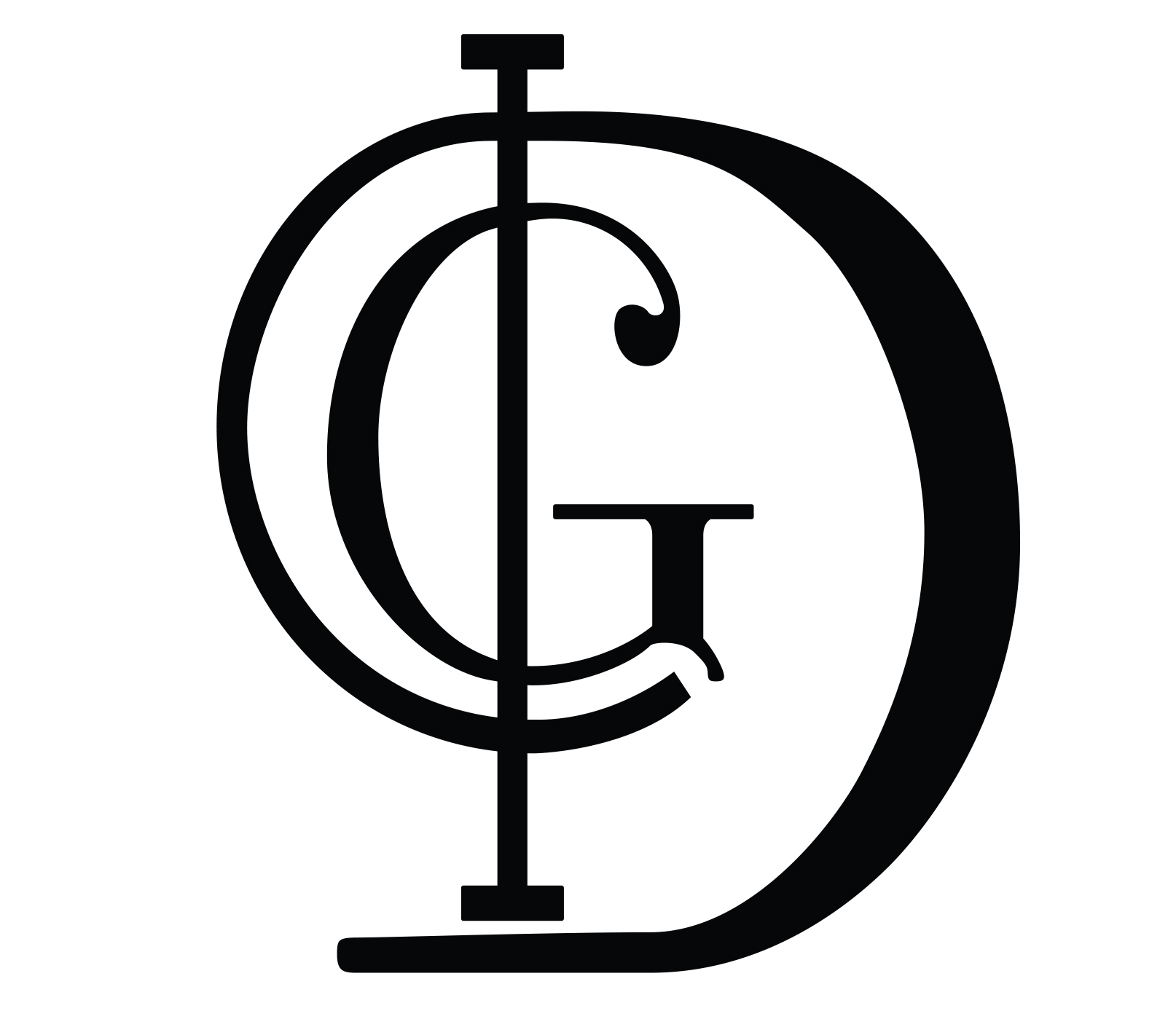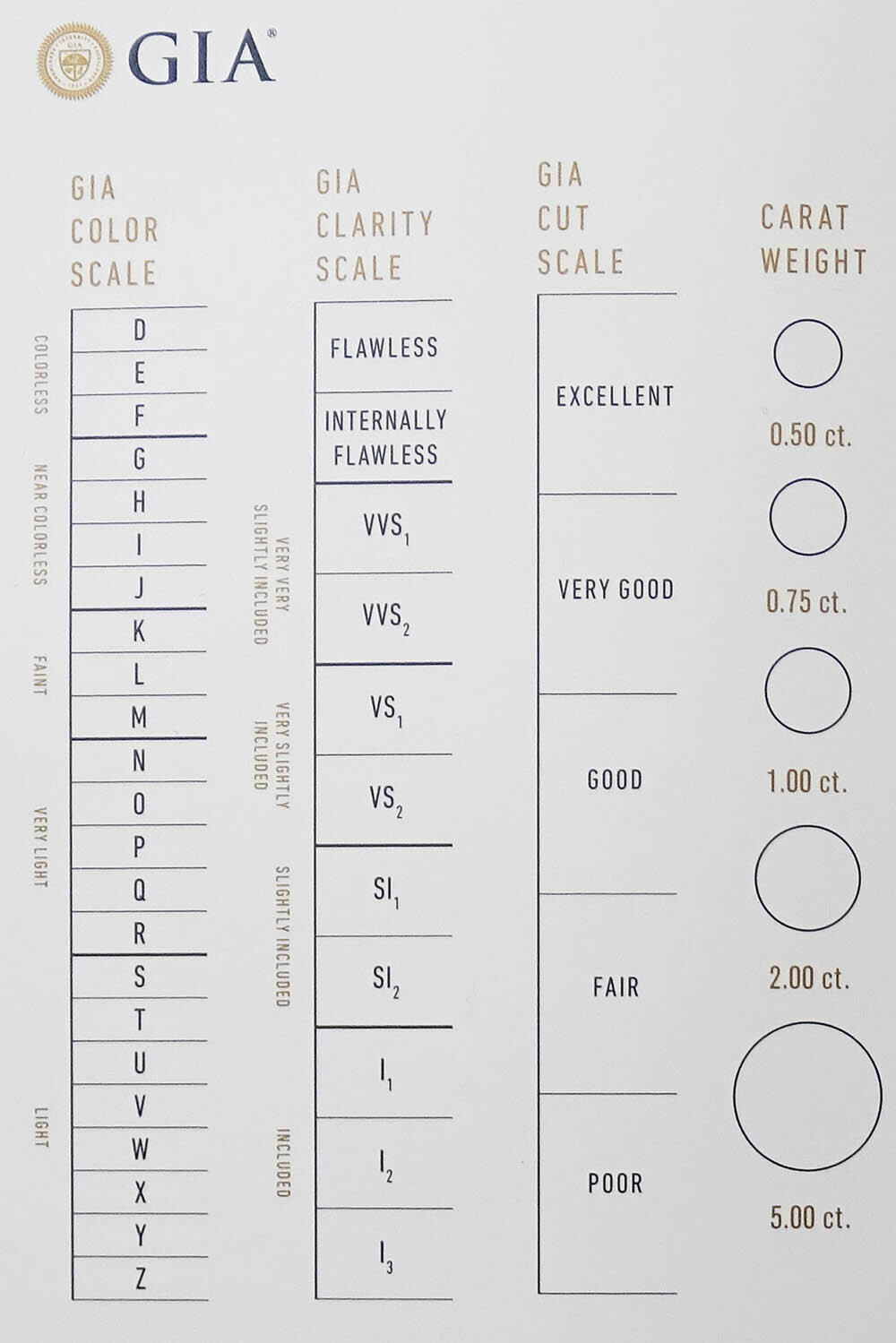Simplifying The Gemological Institute of America's (GIA) 4 Cs
When talking about diamonds, most of the time, you will hear about something called the 4 Cs. The 4 Cs are color, clarity, cut and carat weight. These are the primary factors that go into determining not only the value of a diamond, but its relative beauty as well. Let’s take a look at each of the Cs individually.
Color: The color scale rates the color of a diamond with a letter of the alphabet in order starting with D and ending with Z.* This scale is only used to grade white diamonds. As you go down the alphabet, the diamonds get more yellow, then brownish yellow (sometimes called champagne). Most jewelry stores typically carry diamonds, and/or diamond jewelry in the range of F through J. These colors are more common, more affordable and still look bright and happy!
Clarity: The clarity scale grades the diamond by the quantity of, and ability to see the natural inclusions in the diamond. When diamonds formed in the earth 1-3 billion years ago, most of the time, carbon elements and things like fractures are suspended in the gems due to extreme pressure and heat. A flawless diamond, which is extremely rare, has no visible inclusions, even under magnification. VVS and VS diamonds are Very, Very Slightly included and Very Slightly included and you need magnification to see the inclusions. SI diamonds are Slightly Included and most of the time, still need magnification to see the inclusions. I rated diamonds have Inclusions that can be seen with the naked eye.
Cut: Cut refers to how well a diamond interacts with light, typically based on the proportion, symmetry, polish, brilliance, fire, and scintillation of the gemstone, and they are graded accordingly from excellent to poor. Quite simply, the better the cut the more it sparkles!
Carat weight: Last, but certainly not least, is carat weight. Carat weight is how the size of the diamond is measured. As with the diamonds graded at the top of the color and clarity scales, the larger the diamond the more rare it is. A one (1.00) carat diamond is popular these days and can be pricey, depending on all the factors laid out above. There can be a big jump in price when you hit a full 1.00 carat and over. Tip: a 0.98 carat, H color, VS clarity diamond can look just as big and beautiful as a 1.00 carat with the same color and clarity, but can have a significantly smaller price tag. However, if you find a 0.75 carat diamond with a high grading like F color, VVS clarity, it could be as much, or more expensive than a 1.00 carat with lesser color and clarity. When it comes to diamonds, bigger is not always better.
The bottom line is, you have to see diamonds in person and compare them to each other to fully appreciate their beauty and their differences. We brought in a 1.75 carat diamond and a 2.00 carat diamond with the same color and clarity for a young man to look at for an engagement ring. To his eye, the 1.75 carat was a more beautiful gemstone than the 2.00 carat, so he chose the 1.75 carat. Buying a diamond is an emotional and visual experience that is best done in person. It is very difficult to see the subtle differences in the gemstones on a computer screen.
Anytime you need a quality diamond, just give us a call, or come on by to see what we have. Although we don’t carry many loose diamonds, Ginger can bring in almost anything your heart desires!
*There used to be various ways of characterizing diamonds. Starting in the 1800s, diamonds were graded with A, B or C (that is why GIA’s system starts with D). By the late 1800’s, numerals like I, II, III and IV were used, as well as AAA, AA and A. Inconsistent signifiers made quality control and diamond trading on a global scale very difficult. A global standard was developed by the Gemological Institute of America, or GIA, in 1953.

